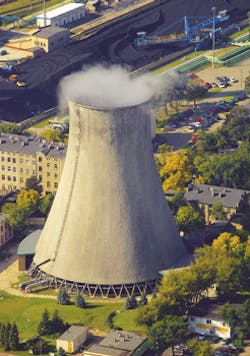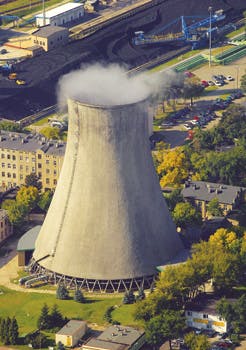Water & Power: Kick-starting the Old Marriage
Tom Freyberg
Chief Editor
In a pincer like movement increasing environmental standards and potential cost savings are forcing the power sector to upgrade and invest in advanced water technologies. Will the water-energy nexus become even more promiment in future years?
Water and power are like an old married couple. They've been dependent on each other for years but don't really like to admit it. They can act independently but secretly, deep down, they know they rely on each other for getting by in the world.
The marriage analogy has also been translated into a buzz-word, namely the water-energy nexus. Usually I'm not a big fan of buzzwords. They are over and wrongly used by many. For once, I agree that this buzzword can justify all of the hype.
I was invited to speak on this very issue at the recent Independent Powers Producers Forum retreat in Bangkok, right after PennWell's Power-Gen Asia event.
Water and power have been intrinsically linked since the dawn of man. By its very nature water is heavy and requires a lot of energy to transport it from source to tap. After all, 10% of global electricity demand is taken by water pumping alone. And of course, water is a necessity for power plant operations. Cooling, cleaning and steam production all rely upon this natural element.
Yet the million dollar question is whether there are indeed market opportunities for either industry looking to cross over? If the progress of Veolia Environnement's efforts are anything to go by then I would say yes.
As you can read from the exclusive interview with Veolia Water CEO Jean-Michel Herrewyn starting on page 12, the firm's technology supplier subsidiary has seen a 35% increase in its industrial activity over the last three years alone.
This is an exemplary tale of a company experienced in providing water as a service, consolidating this activity in markets such as the UK, and really seeing the benefits of increasing its technology arsenal for industrial clients.
We've already seen how water companies are offering the service of power production to help secure projects. Take Hyflux's bid for Singapore's second desalination facility - Tuaspring - it plans to build its own 400MW+ power plant alongside the water plant and sell excess power to the grid.
Globally, the challenge of providing enough water to generate power which can then be used to transport water (I know, it gets confusing) is upon us. Estimates from the World Energy Council suggest that water needed for power production is expected to double over the next 40 years. By 2050, total power demand for water is expected to increase by 100 billion m3.
As can be seen in the Creative Finance article on the GCC's water sector development on page 16, Zero Liquid Discharge (ZLD) technologies are predicted to gain more traction in the Middle East and globally.
Brine leftover from wastewater processing by membranes is treated by evaporation and crystallation leaving only salt crystals or dry cake, which can be disposed of. As in the name, no liquid is left to discharge - particularly useful for areas where it's environmentally, or politically, difficult to simply discharge treated effluent.
Food and drink manufacturers are also a key target for major technology suppliers. On page 40 you can read how Pepsico is reusing 75% of its water onsite at a crisp production facility in Arizona using Ultrafiltration and Membrane Bioreactor technology. This facility has been touted as a flagship project in the company's journey of conserving nearly 16 million cubic meters of water in 2011, from a 2006 baseline.
It's clear that the water industry's role is changing. Whereas in the past water and power utilities could be accused of silo-thinking, acting and offering separate businesses; these times are over. And just like with the elderly couple mentioned earlier, I'm hoping it's a marriage that ends up happily ever after. Enjoy the issue.

